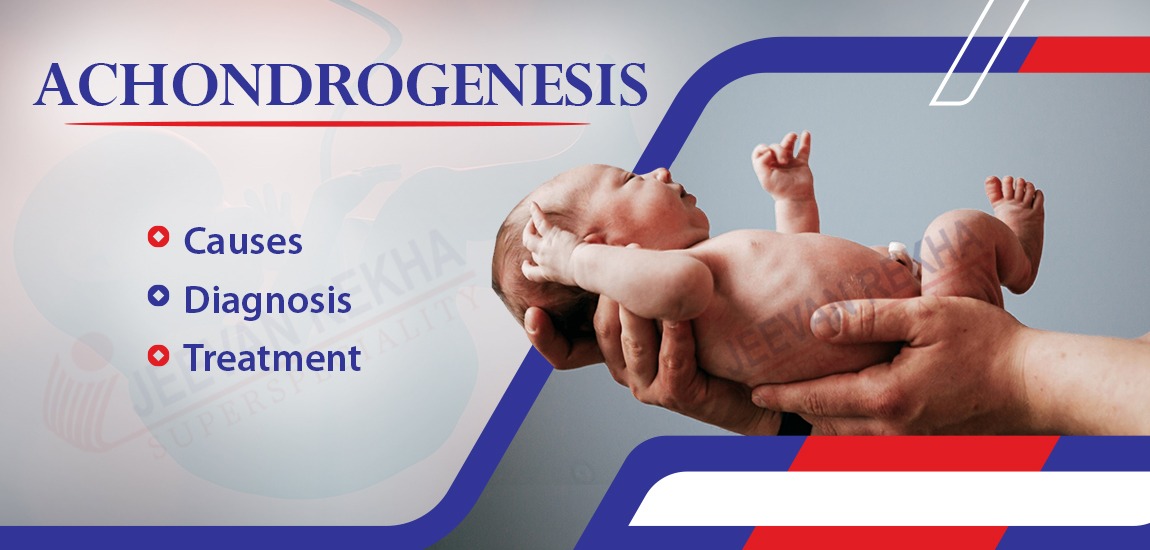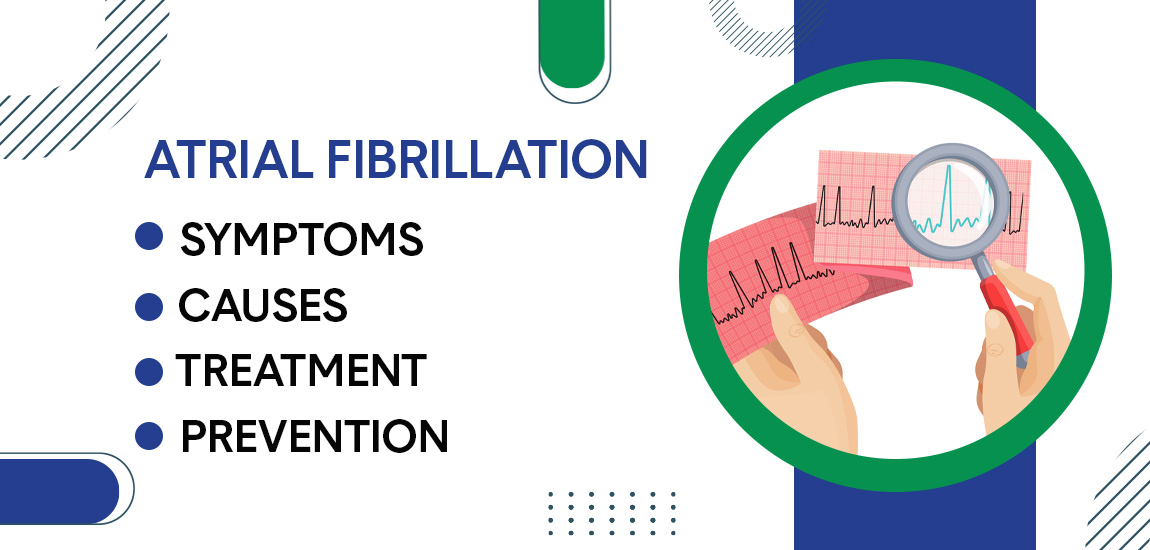
- By JRSH Admin
- In Health and Tips,
- Posted November 23, 2023
Achondrogenesis: Causes, Diagnosis, and Treatment
Achondrogenesis is a category of uncommon skeletal dysplasias that are typified by severe limb and trunk shortening, aberrant rib and vertebral development, and additional skeletal anomalies.
The majority of affected infants are stillborn or pass away from respiratory failure soon after birth as a result of the potentially fatal health issues linked to these conditions. Achondrogenesis comes in two varieties: type II is an autosomal dominant disorder and type IA and type IB are autosomal recessive disorders. All forms of achondrogenesis are genetic conditions.
All forms of achondrogenesis are extremely severe skeletal dysplasias that are typically identified as early as week 14–17 of gestational age through prenatal ultrasound examination.
What is Achondrogensis?
Achondrogenesis is a rare and severe genetic disorder that affects the development of cartilage and bone. It is part of a group of conditions known as skeletal dysplasias, which involve abnormalities in the formation and growth of bones and cartilage.
There are several types of achondrogenesis, and they are generally characterized by a lack of bone formation and severe skeletal abnormalities. The condition is often fatal either before birth or shortly after due to respiratory insufficiency. Individuals with achondrogenesis typically have extremely short limbs, a small chest, and a soft skull.
Causes of Achondrogenesis:
The main cause of achondrogenesis is a genetic mutation that interferes with the growth of bone and cartilage. Here are key points about the causes of achondrogenesis:
- Genetic Mutation: Achondrogenesis is a genetic disorder, meaning it is caused by mutations in specific genes. Mutations affecting genes involved in the formation of cartilage and bone can lead to the characteristic skeletal abnormalities seen in achondrogenesis.
- Cartilage and Bone Development: The mutations typically affect genes responsible for the production of collagen, a protein that is a crucial component of cartilage and bone. Disruption in the normal function of these genes impairs the proper development of the skeletal system.
- Inheritance Patterns: Achondrogenesis is often inherited in an autosomal recessive manner. This indicates that a person who is impacted has received two copies of the defective gene, one from each parent. If both parents are carriers (have one normal and one mutated gene), there is a 25% chance of having a child with achondrogenesis in each pregnancy.
- Type and Severity: There are different types of achondrogenesis, such as type IA and type II, each associated with specific genetic mutations and varying degrees of severity. The specific genetic changes determine the type of achondrogenesis and influence the clinical features of the condition.
- Spontaneous Mutations: In some cases, achondrogenesis may occur due to spontaneous mutations that arise during the formation of an individual's reproductive cells or early in fetal development. These cases are not inherited from parents but are the result of random genetic changes.
Also read: Pregnancy Diet Guide & Meal Plan for a Healthy Baby
Diagnosis of Achondrogenesis:
The diagnosis of achondrogenesis typically involves a combination of clinical evaluation, imaging studies, and genetic testing. Here are some of the diagnosis in diagnostic process:
1. Clinical Evaluation:
- Physical Examination: A thorough physical examination is conducted to assess the characteristic features of achondrogenesis, including extremely short limbs, a small chest, and other skeletal abnormalities.
- Family History: Gathering information about the family history can help identify any patterns of inheritance and determine the likelihood of a genetic component.
2. Imaging Studies:
- Ultrasound: Prenatal diagnosis is often possible through ultrasound imaging, which can reveal skeletal abnormalities in the developing fetus. Features such as short limbs and a small chest may be detected during routine prenatal ultrasound examinations.
- X-rays: After birth, X-rays of the skeleton can provide detailed images of bone structure, helping to confirm the diagnosis and assess the severity of skeletal abnormalities.
3. Genetic Testing:
- Molecular Genetic Testing: Genetic testing, such as DNA sequencing, can identify specific mutations in genes associated with achondrogenesis. This is crucial for confirming the diagnosis and understanding the genetic basis of the condition.
- Chromosomal Analysis: In some cases, chromosomal analysis may be performed to rule out chromosomal abnormalities. Achondrogenesis is primarily caused by mutations in specific genes rather than chromosomal abnormalities, but this analysis may be part of the diagnostic process.
4. Postmortem Examination (if applicable):
- In cases where achondrogenesis leads to fetal demise or neonatal death, a postmortem examination may be performed to further investigate the extent of skeletal abnormalities and contribute to a more comprehensive understanding of the condition.
It's important to note that achondrogenesis is a rare and severe condition, and the diagnostic process involves collaboration between various medical professionals, including geneticists, radiologists, and neonatologists. Early and accurate diagnosis is essential for providing appropriate medical care and genetic counseling to affected individuals and their families.
Also read: What are Infertility, Treatments, Causes, Types & Symptoms
Treatment of Achondrogenesis
Achondrogenesis is a severe genetic disorder with significant skeletal abnormalities, and there is currently no cure for the condition. Treatment primarily focuses on supportive care and managing associated complications. Here are key points regarding the treatment of achondrogenesis:
1. Supportive Care:
- Respiratory Support: Infants with achondrogenesis may require respiratory support due to the small chest and potential respiratory insufficiency.
- Nutritional Support: Adequate nutrition and feeding support may be necessary, as individuals with achondrogenesis may have difficulty feeding due to skeletal abnormalities.
2. Orthopedic Management:
- Orthopedic Interventions: Orthopedic measures may be considered to address skeletal abnormalities, although the options are limited. These may include bracing or surgical interventions to improve limb function or correct deformities.
3. Pain Management:
- Pain Relief: Individuals with achondrogenesis may experience pain due to skeletal abnormalities. Pain management strategies, including medications, may be employed to enhance comfort.
4. Genetic Counseling:
- Family Planning: Genetic counseling is essential to those who are impacted and their families. Counseling helps them understand the genetic basis of achondrogenesis, assess the risk of recurrence in future pregnancies, and explore family planning options.
5. Multidisciplinary Care:
- Team Approach: Given the complexity of achondrogenesis, a multidisciplinary approach involving various medical specialists, such as geneticists, orthopedic surgeons, neonatologists, and supportive care teams, is important for comprehensive management.
6. Prenatal Diagnosis and Counseling:
- Early Detection: In cases where achondrogenesis is suspected during pregnancy, early prenatal diagnosis through ultrasound and genetic testing allows for informed decision-making and appropriate planning for the medical care of the infant.
7. Emotional and Psychosocial Support:
- Counseling Services: Emotional and psychosocial support for affected individuals and their families is essential. Coping with the challenges of a severe genetic disorder can be emotionally taxing, and counseling services can provide valuable support.
It's important to note that the management of achondrogenesis is primarily focused on improving the quality of life for affected individuals and providing support for their families. Due to the severity of the condition, the prognosis is often limited, and the focus is on ensuring comfort and well-being. Treatment plans should be individualized based on the specific needs and challenges faced by each affected individual.
Tags
Blog Search
Latest Posts
-
Ear Infections (Otitis Media): Top Triggers & How to Avoid Them?
April 11, 2025 -
Implantation Bleeding Vs Periods: Know the Difference
March 12, 2025 -
5 Tips for a Happy and Healthy Summer
February 27, 2025 -
Body Ache (Pain): Causes, Symptoms and Treatment Options
February 10, 2025 -
Fatigue and Exhaustion: Causes, Symptoms, and Treatment
January 08, 2025




